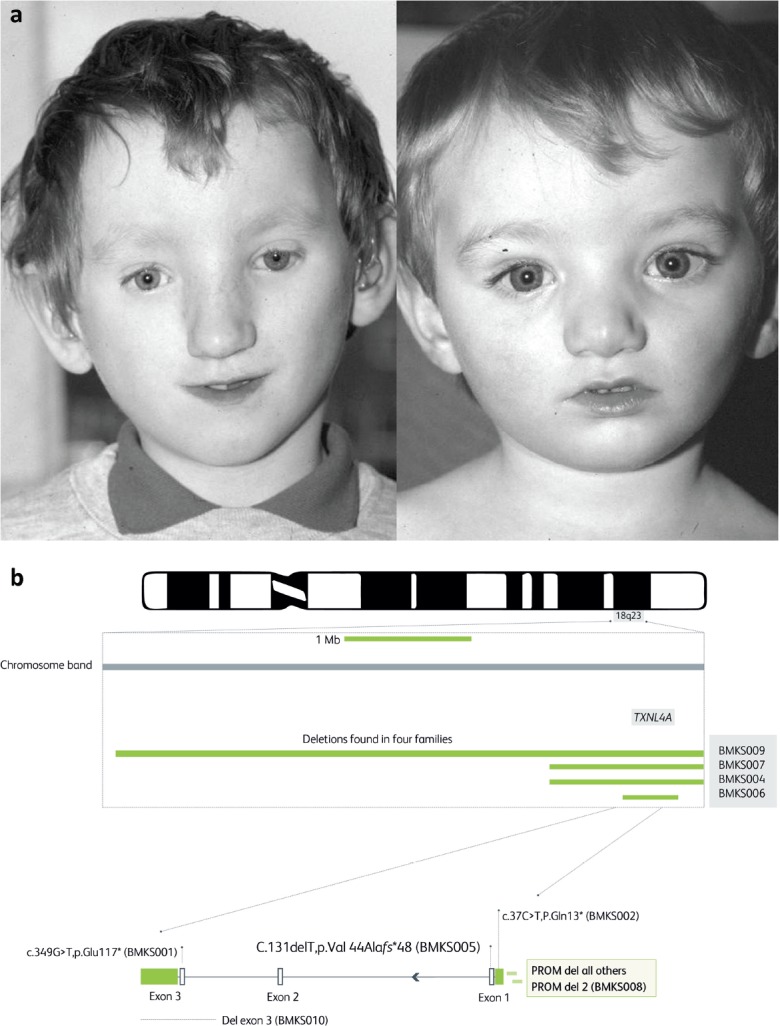Fig 3.

a) Two brothers who presented with facial malformations including the rare problem of choanal atresia, a failure to develop a nasal airway. A third local child, a little girl, was born soon after with the same problem. Two brothers in Birmingham were seen with the same features, allowing identification of the new disorder which became known as Burn–McKeown syndrome.22 b) Whole genome sequencing of DNA from 10 families with a person showing features of Burn–McKeown syndrome revealed, in nine, deletions or point mutations in the TXNL4A gene, responsible for part of the spliceosome. In all cases there was a second deletion involving the gene promoter. One case (BMK008) was homozygous for a slightly different promoter deletion. Adapted from Wieczorek D, Newman WG, Wieland T et al. Compound heterozygosity of low-frequency promoter deletions and rare loss-of-function mutations in TXNL4A causes Burn–McKeown syndrome. Am J Hum Genet 2014;95:698–707.
